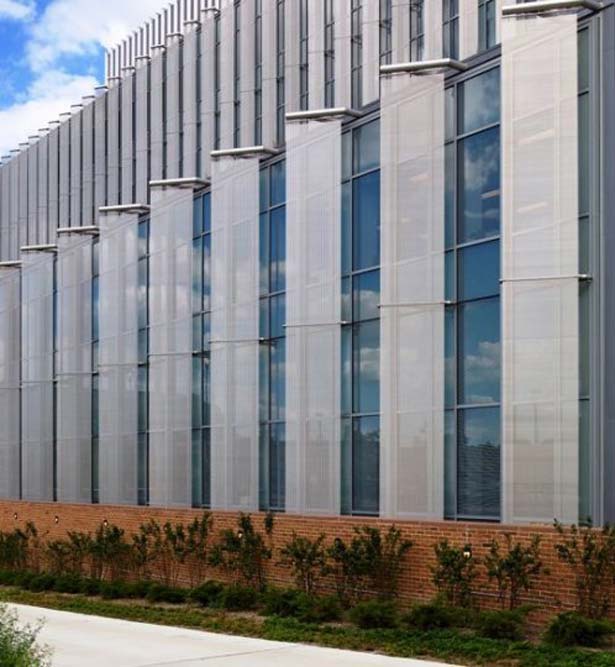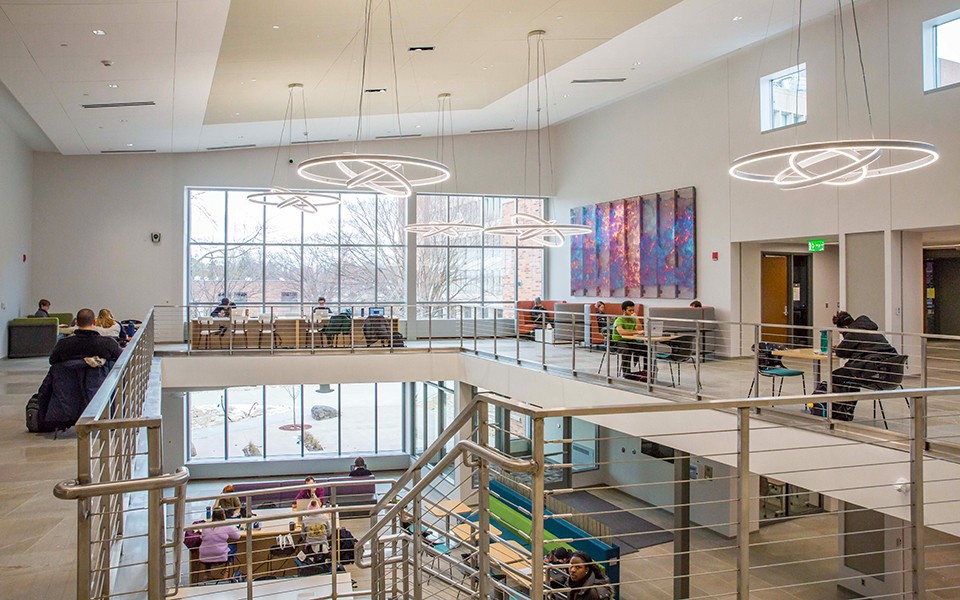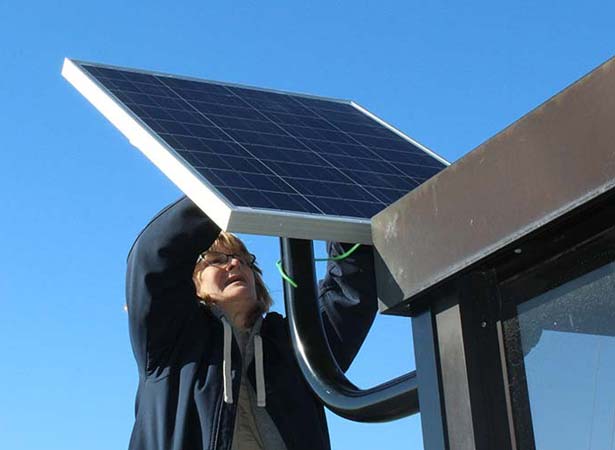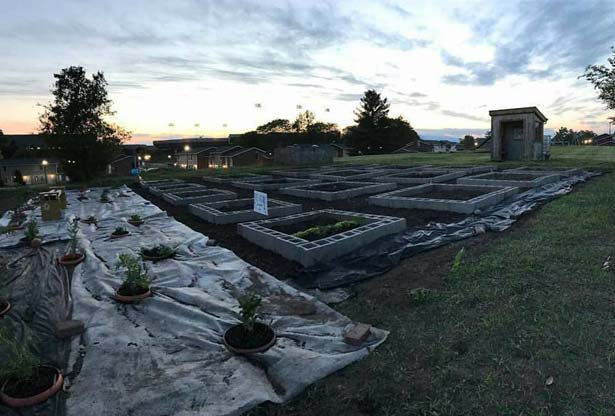Sustainable Campus Infrastructure
The Mark Jefferson Science Complex is a LEED Gold Building


The original Mark Jefferson building was constructed in the late 1960's. A $90 million renovation was completed in 2012.
The Mark Jefferson Science Complex renovation completed in 2012 and received Leadership in Energy and Environmental Design (LEED®) Gold certification. Features include:
- Energy Efficient Solar Management – Using Omega 1510 metal mesh systems from GKD, 900 square meters of the building is covered. This protects the building from heating up in the sun, and still allows for natural light. High-reflectivity materials were also used to reduce solar gain.
- Green roof - a 3,000 square foot garden on the roof and home to drought-resistant flowering plants native to Michigan provides stormwater management benefits, in an area which previously had seasonal flooding. In addition, the green roof provides insulation resulting in $3,600 in energy savings annually.
- Dedicated outdoor air system with radiant cooling and a dual energy recovery system.
- High efficiency centrifugal chiller.
- Chilled beam technology (one of the first installations in the state).
- Glazing systems with tinted frit glass and stainless steel mesh sunshades spanning the west facade of the building.
- Stormwater management strategies, including a bioswale featuring native plants
- Occupancy sensors to turn off lights and reset airflows and temperatures when spaces are un-occupied.
- Energy efficient lighting.
- Low flow urinals and faucets and dual flush toilets.
- Diverted nearly 85 percent of on-site generated construction waste from landfill.
- Recycled content and regional building material selection.
- Low-Emitting materials (paints, coatings and carpet systems).
- A green housekeeping program.
Strong Hall is LEED Certified


Strong Hall opened with the start of Winter 2019 classes, a milestone for Eastern as it marked the completion of the third and final phase of the Science Complex.
Strong Hall obtained a Leadership in Energy and Environmental Design (LEED®) v. 4.0 certification in 2019. Features include:
- The structure is enclosed by a new, high performance exterior wall system, decreasing the amount of energy required to heat and cool the building.
- Natural materials such as wood and stone contribute to the building occupants' comfort and well-being. A large stone wall in the atrium is Peruvian travertine.
- Many finish materials have been locally based and selected from renewable sources
- The heating and cooling system includes an energy recovery system, effectively gleaning heating and cooling energy from conditioned air before it is exhausted from the building.
- Control systems monitor activity, effectively reducing operational cost when rooms are not occupied.
- The landscaping consists of native plants and is designed to reduce paving and increase plant materials.
- A rain garden receives roof drainage and holds the water underground.
- A bioswale incorporates elements of advanced storm water management design, thus helping remove debris or elements out of runoff water.
- Along with a dry river bed, the bioswale provides live learning features for students, bringing the classroom to the outside of the building.
EMU heated and powered nearly without coal/oil
(If you are in need of captioning, please click the closed caption button at the bottom of the frame.)
EMU is one of a few universities in the nation that is heated and powered almost entirely without coal or oil. The 55-ton cogeneration system that EMU uses can supply approximately 98 percent of the heat and 93 percent of the electricity to Eastern's 800-acre campus. Cogeneration is a combined heat and power system that uses one fuel source, in this case natural gas, to simultaneously produce electricity and steam heat. The system will achieve annual net energy savings to the University of more than $2.8 million creating a return on investment in just under nine years.
How much environmental savings will result? The new cogeneration unit will create an annual reduction of 21,305 tons of carbon dioxide (CO2), equivalent to:
- 78.2 million miles driven by an average passenger vehicle; or,
- Preservation of 260 acres of forests.
EMU solar power


Solar panels use the sunlight as a source of energy to generate electricity.
Solar panels have been installed at the various AAATA (The Ride) bus stops lining the perimeter of campus in order to provide better lighting during the evening hours. The panels offer improved and more direct lighting around bus stops, creating a more inviting environment at night while preserving EMU’s ongoing goals of being cost efficient and reducing its carbon footprint.
The bus stops serve a variety of AAATA routes that pass by or through campus, including the Route 41, the shuttle between campus and the College of Business, along with several routes that connect Ypsilanti and Ann Arbor. Those include Route 4, which runs along Washtenaw and Cross Street; Route 3, which runs along Huron River Drive; and Route 5, which runs along Cross Street.
The solar panels are actually comprised of small units called photovoltaic (PV) cells that convert sunlight (photons) to electricity (voltage). Each PV cell is basically a sandwich made of two slices of semi-conducting material, usually silicon, that create an electrical charge when exposed to sunlight.
Solar panels work by allowing photons or particles of light to knock electrons from atoms, generating a flow of electricity. The energy is stored in the battery assemblies, to be utilized at night. Occupancy sensors on the bus stops help use the stored energy efficiently.
Giving Garden – EMU's Community Garden


Eastern's community garden.
A community garden for EMU students, staff, faculty and Ypsilanti residents to rent plots and garden. Their mission is to empower individuals through gardening and upholding five guiding principles: sustainability, organic agriculture, community & place, education, and respect. The garden donates portions of their food to Swoops food pantry and is actively involved in the community.
